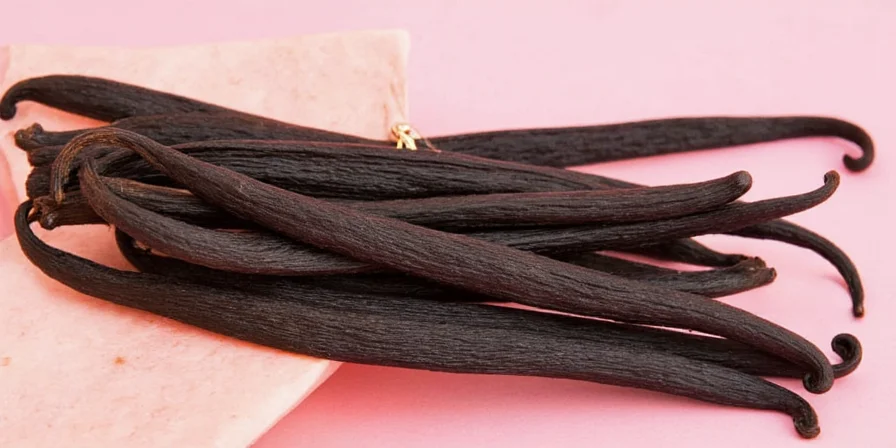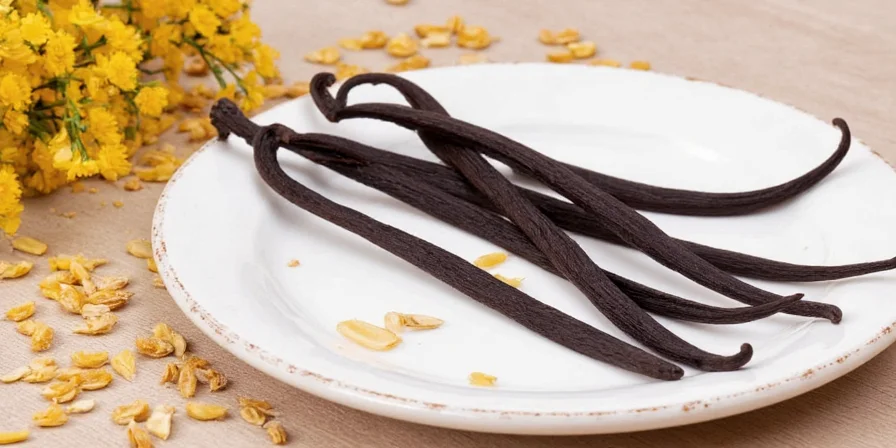Vanilla is expensive primarily due to labor-intensive hand-pollination, lengthy curing processes, climate vulnerability, market volatility, and limited growing regions. This comprehensive guide explains exactly why pure vanilla costs significantly more than artificial alternatives and how to maximize your investment.
The 5 Real Reasons Vanilla Costs So Much
Unlike most spices, genuine vanilla requires extraordinary human effort at every stage of production. Here's what makes it one of the world's most expensive spices by weight:
- Hand-pollination necessity - Vanilla orchids require meticulous manual pollination outside their native habitat
- 9-month maturation period - Beans take nearly a year to develop after pollination
- Months-long curing process - Requires multiple precise steps to develop flavor compounds
- Climate vulnerability - Primary growing regions face frequent cyclones and political instability
- Market speculation - Limited supply triggers commodity trading that amplifies price swings
Understanding Vanilla Production Costs
Vanilla doesn't come from a mysterious black box in a lab—it starts as an orchid. Specifically, the vanilla bean comes from the pod of the Vanilla planifolia orchid, also known as flat-leaved vanilla.

A blooming vanilla orchid ready for pollination.
Hand-Pollinated Heaven: The Labor Factor
In nature, vanilla flowers are typically pollinated by specific bees and hummingbirds found only in Central and South America—the native habitat of vanilla. But when vanilla was introduced to other tropical regions like Madagascar (producing 80% of the world's supply), Indonesia, and Tahiti, those natural pollinators weren't present.
This means every vanilla flower must be pollinated manually using a thin stick or even a toothpick—a painstaking process that requires skill and precision. One experienced farmer can hand-pollinate about 1,000 flowers a day, but each vine blooms over several days, meaning the same worker has to return repeatedly.

Farmers carefully pollinate vanilla blossoms by hand.
Harvesting Challenges and Timing Precision
After successful pollination, the vanilla pods take 8-9 months to mature. Unlike picking ripe tomatoes, vanilla beans must be harvested at the perfect moment—when the tip begins turning yellow but before the bean splits open.
Harvest too early, and the beans won't develop proper flavor. Too late, and quality plummets. This narrow harvest window requires constant monitoring of thousands of vines across plantations.
The Multi-Stage Curing Process: Where Flavor Develops
Harvested vanilla beans undergo a meticulous curing process lasting weeks to months. This transforms flavorless green pods into aromatic vanilla through:
- Killing: Blanching in hot water to stop growth and start enzymatic reactions
- Sweating: Wrapping in cloth for fermentation to develop aroma
- Drying: Sun-drying to concentrate flavor while preventing mold
- Aging: Storing for up to a year for full flavor development

Vanilla beans being dried under the tropical sun.
Market Volatility: Vanilla Price History
Vanilla prices fluctuate dramatically due to weather, politics, and crop disease. Our price analysis shows how external factors impact costs:
| Year | Global Vanilla Price (per kg) | Major Events |
|---|---|---|
| 2015 | $100 | Stable production |
| 2017 | $400 | Madagascar cyclones |
| 2018 | $600 | Supply shortages |
| 2021 | $250 | New crops, some stability |
Natural vs. Artificial Vanilla: Cost Comparison
Understanding the differences helps justify vanilla's premium pricing:
| Feature | Natural Vanilla | Artificial Vanilla |
|---|---|---|
| Source | Vanilla bean | Synthetic vanillin (wood pulp/petrochemicals) |
| Flavor Compounds | 200+ complex compounds | Single vanillin compound |
| Current Price (per oz) | $8-15 for pure extract | $1-3 for imitation |
| Best Use Cases | Gourmet baking, custards, premium desserts | Chocolate baked goods, commercial icing |
Smart Ways to Maximize Your Vanilla Investment
Since vanilla won't get cheaper soon, these expert strategies help you use it wisely without sacrificing flavor:
- Purchase whole beans - They keep for years when stored properly in airtight containers
- Repurpose spent pods - Infuse sugar, milk, or spirits with used pods to create vanilla-infused products
- Make homemade extract - Split 5-6 beans in 2 cups vodka for high-quality extract at half the store price
- Use strategically - Reserve real vanilla for recipes where it's the star flavor (crème brûlée, vanilla ice cream)
- Consider alternatives - Tonka bean or high-quality maple syrup work well in select applications

Creative ways to stretch your vanilla budget without sacrificing flavor.
Emerging Solutions for Price Stability
Industry innovations are addressing vanilla's price volatility through:
- Agroforestry systems - Vanilla vines growing under banana trees for natural temperature regulation
- Blockchain traceability - Verifying ethical sourcing and fair pricing for farmers
- Climate-resilient farming - Diversified crop approaches reducing cyclone vulnerability
- Lab-grown alternatives - Fermentation-derived vanillin that mimics natural complexity
Practical Guidance for Consumers
When shopping for vanilla, look for these quality indicators:
- For extract - Minimum 35% alcohol content, dark amber color, thick consistency
- For beans - Plump, oily appearance with slight crystallization (vanillin crystals)
- Avoid - Products labeled "vanilla flavor" without specifying real vanilla content
- Store properly - Keep in airtight containers away from light and moisture
Frequently Asked Questions
Why can't vanilla be pollinated by bees outside its native habitat?
Vanilla orchids evolved with specific Melipona bees found only in Mesoamerica. Outside this region, no native insects recognize vanilla flowers as food sources. Manual pollination remains essential because no other pollinators reliably transfer pollen between the flower's male and female parts.
How does curing affect vanilla's flavor profile compared to fresh pods?
Raw vanilla pods contain vanillin glucoside, which is flavorless. The curing process activates enzymes that convert this compound into aromatic vanillin while developing over 200 additional flavor compounds. Without proper curing, vanilla would lack its signature complexity and aroma.
What makes vanilla more volatile than other agricultural commodities?
Vanilla's volatility stems from three unique factors: its 9-month maturation cycle prevents rapid supply adjustment, its labor-intensive production lacks mechanization alternatives, and its primary growing region (Madagascar) faces frequent cyclones. These create supply shocks that speculative traders amplify, unlike more stable crops like coffee or cocoa.
Can I substitute artificial vanilla in all recipes?
No. Artificial vanillin works acceptably in strongly flavored items like chocolate brownies but fails in delicate applications like crème anglaise or vanilla bean ice cream where nuanced flavor matters. The single-compound profile of imitation vanilla cannot replicate natural vanilla's floral and smoky undertones.
Does fair trade certification impact vanilla pricing?
Yes—fair trade premiums typically add 15-20% to retail prices but ensure farmers receive 30-50% higher base payments. This stabilizes smallholder incomes during market crashes while funding community projects like schools. The slight premium supports the long-term viability of vanilla farming communities.











 浙公网安备
33010002000092号
浙公网安备
33010002000092号 浙B2-20120091-4
浙B2-20120091-4